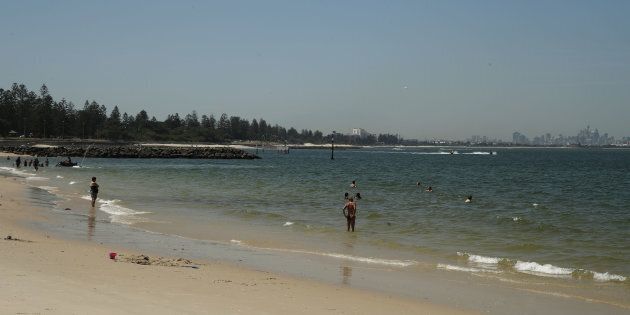
Spring temperature records are forecast to tumble again on Wednesday as new research shows the unfair impact extreme heat is having on less wealthy parts of the nation.
The unseasonably extreme weather is being caused by a pool of unusually hot air that's sweeping across central and eastern Australia, ahead of an approaching low pressure trough.
The system has resulted in heat records for this time of year to be broken over the past week, with more in line to fall on Wednesday.
One area set to burst through 40 degrees is Birdsville, in Queensland, which is expected to reach 43 degrees on Wednesday. If the mercury climbs that high it would match the hottest September day on record anywhere in Australia.
It would eclipse the previous record of 43.1 degrees set in the Western Australian location of West Roebuck, in 2003.
In NSW, Bourke could reach a record 42 degrees, which would be the hottest September day ever recorded in the state.
The heat has prompted warnings of severe fire danger in Queensland and far western NSW.
A Total Fire Ban today for the Far Western area. At 7:30am, there are 110 active bush/grass fires across NSW, 35 not yet contained #NSWRFSpic.twitter.com/DbaWLBQ7QF
— NSW RFS (@NSWRFS) September 26, 2017
In NSW, total fire bans are in place for the far west where the harshest heat is expected, including Bourke, Brewarrina, Broken Hill, Central Darling and Cobar.
Scott Williams, senior forecaster on the Bureau of Meteorology's extreme weather desk, described the weather as an "unusual, intense, early-season event".
"Some [of the predicted temperatures] would break records by as much as two to three degrees, so it's very significant," he told the ABC.
The extreme spring weather comes as alarming new research shows that Australian metro areas have experienced a loss of vegetation equivalent to the size of Brisbane in the last three years.
The research, released Wednesday from RMIT, also reveals poor and disadvantaged Australian suburbs risk having urban hotspots that are more than 10 degrees higher than those found in wealthier neighbourhoods.
"As they lose vegetation, urban areas start to act like heat sponges," RMIT associate professor Marco Amati said.
"Green spaces and heat concentration in Australia are spread unevenly, which is contributing to an uneven spread of economic and health circumstances."